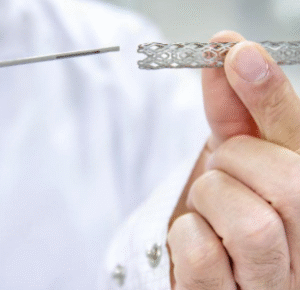
LASIK Eye Surgery has transformed the field of vision correction, offering a fast, effective solution for nearsightedness, farsightedness, and astigmatism. Patients often seek LASIK for its minimally invasive approach and rapid recovery time, but concerns about possible side effects—especially dry eye—are part of the decision-making process. Understanding the treatment steps, recovery process, and ways to manage dry eye can ensure an informed and successful LASIK experience.
What Is LASIK Eye Surgery?
LASIK (Laser-Assisted In Situ Keratomileusis) is a refractive surgery that reshapes the cornea to correct how light enters the eye, thus treating common vision problems. It’s a highly precise, image-guided procedure performed on an outpatient basis.
The LASIK Procedure: Step-by-Step
Consultation and Preoperative Assessment
- Comprehensive eye exam, corneal mapping, and measurements.
- Screening for dry eye and other ocular surface conditions before approval for surgery.
Preparation
- Numbing eye drops are applied for comfort.
- The eyelids are gently held open.
Corneal Flap Creation
- A tiny flap is made in the cornea using a femtosecond laser or a microkeratome blade.
Laser Reshaping
- An excimer laser precisely removes microscopic amounts of corneal tissue to adjust its curvature.
- The flap is carefully repositioned.
Completion
- No stitches are needed; the eye begins healing almost immediately.
The Role of Dry Eye in LASIK Preparation
Dry eye can affect both candidacy for LASIK and postoperative comfort. If dry eye is diagnosed before LASIK, surgeons typically recommend treating the condition first with lubricating drops, medications, or lifestyle changes. This preemptive approach helps promote better healing and reduces postoperative complications.
Recovery After LASIK: What to Expect Immediate Postoperative Period
- Within the First 24 Hours: Most patients notice a dramatic improvement in vision, though mild blurriness and light sensitivity are common. Resting the eyes and avoiding touching them is crucial.
- Dry Eye Symptoms: It is common to experience sensations of dryness, grittiness, or mild burning in the days and weeks after surgery. These symptoms occur because temporary disruption of corneal nerves can reduce natural tear production.
- Managing Dryness: Frequent use of preservative-free artificial tears helps maintain comfort. Avoiding windy environments and using a humidifier can also be beneficial.
Short-Term Recovery (First Month)
- Follow-up Visits: Regular check-ins ensure the flap is healing well and the cornea is clear of inflammation or debris.
- Dry Eye Monitoring: Doctors monitor for signs of persistent dryness, prescribing additional therapies if needed, such as anti-inflammatory drops, punctal plugs, or omega-3 supplements.
- Daily Activities: Most people return to work within 1–2 days, but it’s best to avoid makeup, swimming, and high-impact sports for a few weeks to prevent infection or injury.
Long-Term Healing and Visual Stability
- Vision Settling: Vision typically stabilizes within 1–3 months; some patients experience minor fluctuations during this period.
- Resolution of Dry Eye: For many, dry eye symptoms diminish as the nerves regenerate, usually within 3–6 months. A minority may experience longer-term symptoms, which can be managed with ongoing care.
Preventing and Treating Dry Eye After LASIK
- Artificial Tears: Use as recommended by your surgeon, especially in the first several weeks.
- Hydration: Drink plenty of fluids to support tear production.
- Environment: Avoid direct air flow from fans or car vents.
- Supplements: Omega-3 fatty acids may promote tear gland function.
- Medical Interventions: In cases of persistent dry eye, punctal plugs or prescription medications (such as cyclosporine) may be advised.
Patients with a history of severe dry eye or autoimmune disorders may not be ideal candidates for LASIK, but alternatives can be discussed with an ophthalmologist.
Conclusion
LASIK offers life-changing vision correction for millions, but understanding the importance of pre- and post-surgical eye health is critical for optimal results. Dry eye is the most common side effect but can be effectively managed with modern therapies and attentive aftercare. By partnering closely with your eye surgeon and following recommended treatments, most patients achieve excellent vision and long-term comfort after LASIK.




